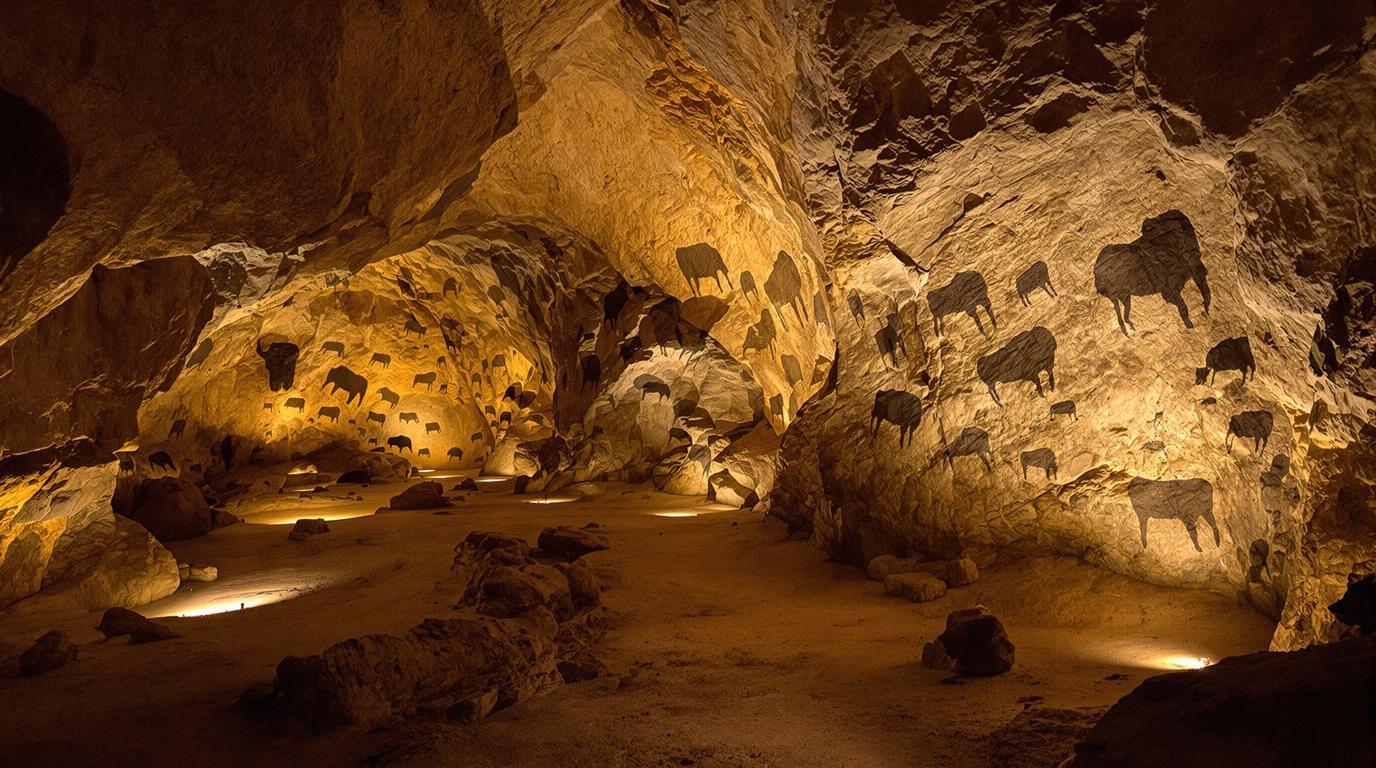Ancient handprints reach through 17,000 years of history in the Grotte de Niaux, a spectacular prehistoric art sanctuary hidden deep within France’s Pyrenees mountains. Unlike its more famous counterpart at Lascaux, this remarkable cave in Ariège allows visitors to experience authentic Paleolithic paintings exactly where they were created, without the buffer of a replica.
The cave that time forgot
Accessible only by walking 800 meters through pitch-black underground passages, the Grotte de Niaux offers something increasingly rare in our modern world: an authentic connection with our most distant ancestors. Armed with only handheld lamps and following expert guides, visitors experience the cave much as prehistoric humans would have – navigating by wavering light through absolute darkness.
“When you first enter the Salon Noir and your torch illuminates a 15,000-year-old bison, the connection across millennia is overwhelming,” explains François Rouzaud, cave guide for over two decades. “These aren’t just paintings – they’re messages from our ancestors.”
The spectacular Salon Noir
The journey culminates in the magnificent “Black Room” chamber, where over 70 meticulously rendered animals stride across calcite walls. Unlike Gaudí’s architectural wonders, these masterpieces were created using simple charcoal and ochre pigments, yet demonstrate sophisticated artistic techniques including perspective and shading.
Bison dominate the menagerie, alongside horses, ibex, and one mysterious weasel-like creature found nowhere else in prehistoric art. The animals’ eyes seem to follow visitors through the chamber, creating an eerily lifelike experience when illuminated by dancing torchlight.
Beyond paintings: mysterious symbols and ancient graffiti
Niaux’s walls hold more than animal figures. Geometric red signs – dots, lines and grid patterns – suggest a symbolic language whose meaning remains unknown. These abstract symbols, like those found in ancient Greek monasteries, hint at spiritual or astronomical significance.
Curiously, the walls also display centuries of graffiti, with signatures dating back to the 1600s. These markings create a peculiar timeline of human presence, from Paleolithic artists to Renaissance explorers to modern tourists.
A trip requiring planning and preparation
Visiting requires advance reservations – sometimes months ahead during peak season. The cave maintains strict visitor limits to preserve delicate paintings, with only 20 people allowed per group. English tours are offered seasonally but book quickly.
The 700-meter journey through uneven, sometimes slippery terrain makes this adventure unsuitable for small children or visitors with mobility issues. Unlike picturesque French villages, Niaux demands physical effort – but the reward justifies every step.
The landscapes of prehistoric Ariège
The surrounding Ariège region offers context for understanding the cave’s prehistoric inhabitants. Dramatic limestone cliffs and verdant valleys resemble the landscapes that Ice Age humans would have known, though they would have encountered woolly rhinos and mammoths rather than today’s cattle and horses.
“These weren’t primitive cavemen,” notes Dr. Marie Bontoux, archaeologist. “They were sophisticated hunter-gatherers who understood animal behavior intimately and developed complex artistic traditions that survived thousands of years.”
Where to stay: Gateway towns to prehistory
Most visitors base themselves in Tarascon-sur-Ariège, a picturesque market town 7km from the cave. Unlike medieval Italian hilltop towns, Tarascon offers modern amenities alongside traditional charm. The town’s Prehistory Park provides context through full-scale reconstructions and hands-on activities perfect for families.
More adventurous travelers can explore the wilder Vicdessos Valley, reminiscent of ancient rainforests in its pristine natural beauty, staying in rustic mountain lodges that offer panoramic views.
A journey through darkness into deep time
Standing before paintings created when glaciers still covered Europe delivers a profound perspective shift. In Niaux’s dark galleries, with only flickering lamplight illuminating bison that have watched over millennia, visitors experience something increasingly rare – genuine connection with our distant ancestors through art that has survived 17,000 years in perfect condition.
The Grotte de Niaux isn’t merely a tourist attraction; it’s a pilgrimage through darkness into humanity’s deepest past, where the line between modern visitor and prehistoric artist blurs with each echoing footstep.
